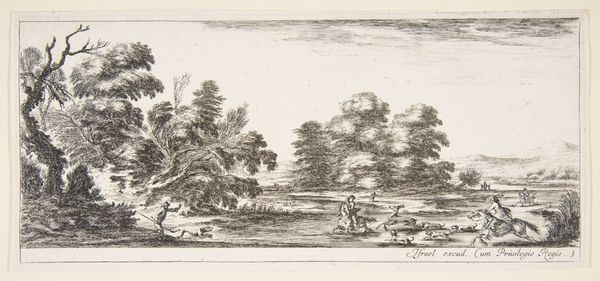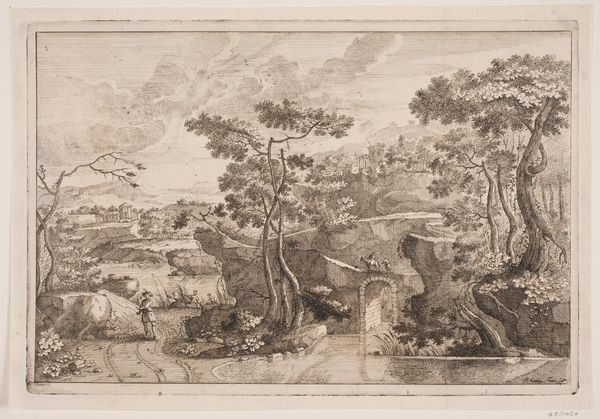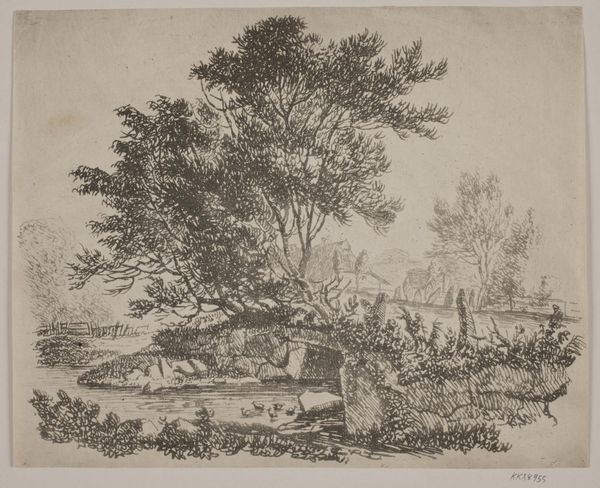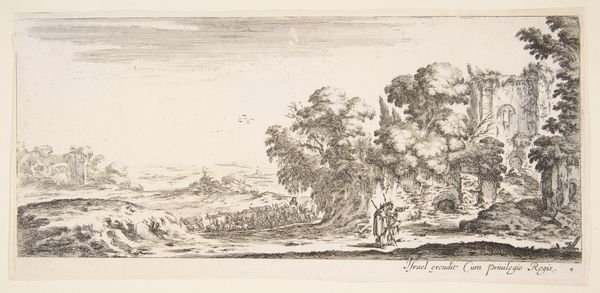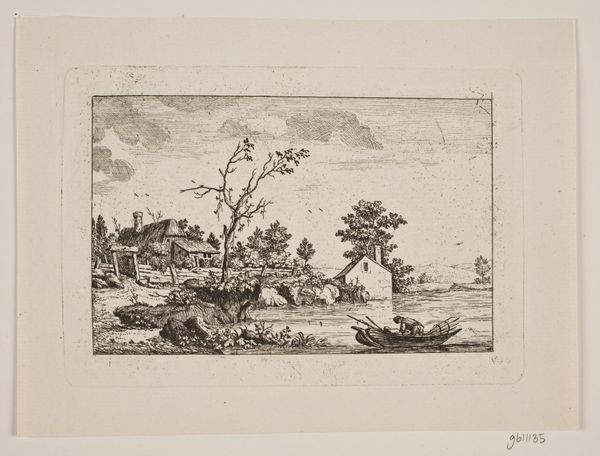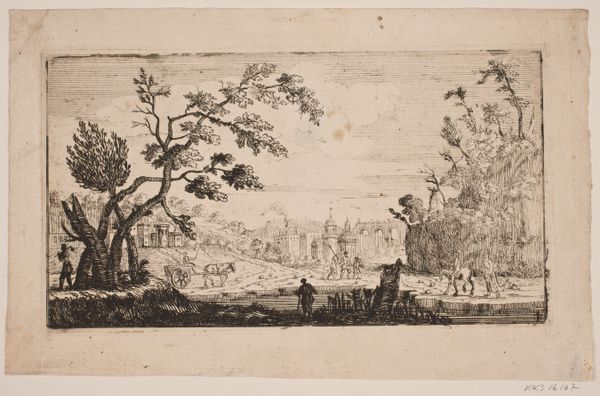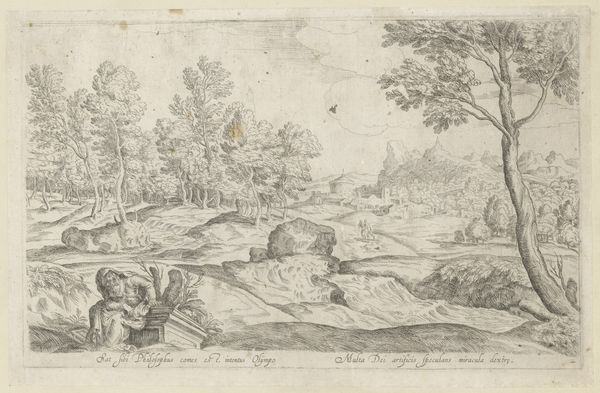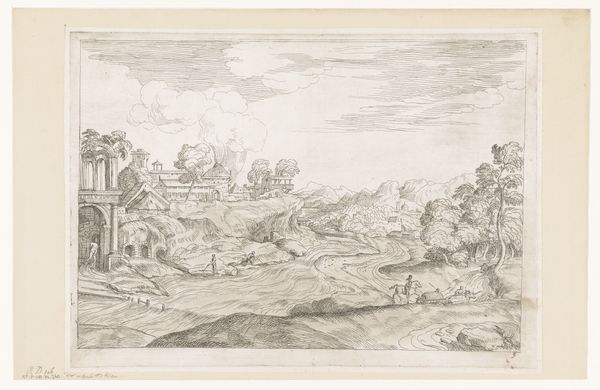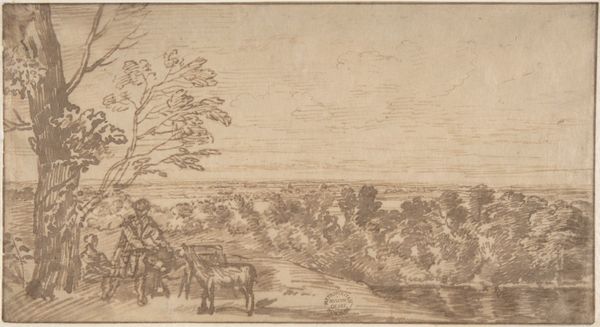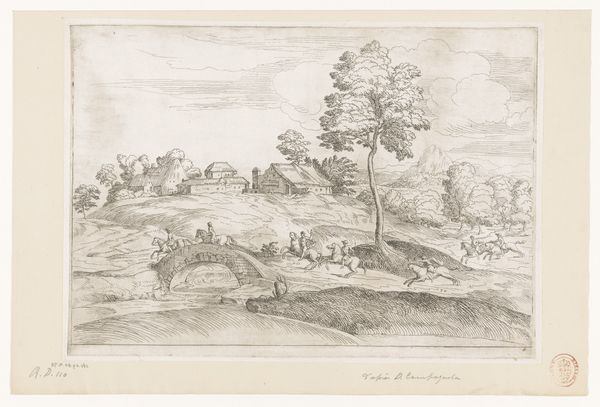
drawing, print, etching, ink, engraving
#
drawing
#
ink drawing
# print
#
etching
#
landscape
#
etching
#
ink
#
genre-painting
#
history-painting
#
academic-art
#
engraving
Dimensions: 225 mm (height) x 348 mm (width) (plademaal)
Editor: Here we have Poul Isac Grønwold's 1749 print, "Frederik V mønstrer regimenterne uden for Kolding". It's an etching or engraving depicting what seems to be King Frederik V reviewing troops outside the city of Kolding. It looks quite detailed and documentary in its style. What strikes you most about this piece? Curator: The interesting question here is what this print was supposed to *do*. These kinds of images weren't just neutral records. Who was the intended audience, and what effect did the artist hope to achieve? Editor: I see what you mean! So, more than just illustrating a historical moment, it served a specific purpose within society. Could it have been for propaganda? To bolster the image of the monarchy or the military? Curator: Precisely. Consider the context: it's 1749. What's the political climate like? Denmark has been at peace, focusing on trade and internal development after some wars. Depicting a strong, orderly army under royal review sends a very specific message: one of stability, control, and readiness. The detailed rendering – all those lines forming soldiers receding into the distance – projects power through visual demonstration. It's not simply about Frederik V; it's about the strength of the Danish state he represents. And printed imagery allowed for wider circulation of that carefully curated image. Editor: It's fascinating how something that appears on the surface to be a simple depiction actually communicates so much about power and the shaping of public opinion at the time. It completely changes my perspective. Curator: Indeed. Examining art this way helps us move beyond aesthetic appreciation and see it as an active player in history. It really underlines the fact that artworks always exist within a web of cultural and political influences. Editor: Thank you! This made me realize I often only see the artwork's beauty, forgetting to analyze the message it sends and its effects.
Comments
No comments
Be the first to comment and join the conversation on the ultimate creative platform.
